It is well known that the pristine islands of the Republic of Palau are a volcanic archipelago spread over the western Pacific Ocean with some of the most spectacular scenery on the planet. However, as stunning as Palau’s islands are and as breathtaking its underwater world - while known for pristine reefs, deep blue waters, and big fish, beneath the surface, Palau offers an underwater museum of over 30 spectacular WWII wrecks providing a glimpse into the country’s past.
While the wrecks of Truk Lagoon (Chuuk in Micronesia) are well known to divers, few know about the wrecks in Palau. Because Palau is so endlessly rich in fish and unspoiled coral gardens, divers from all over the world come to see just that. Only a few wreck aficionados know and appreciate the more than 30 WWII wrecks in Palau, all of which, unlike in Truk Lagoon, lie in very pleasant dive depths.
For this very reason, Navot & Tova Bornovski, two diving and business icons in Palau and directors of the well-known companies Fish 'n Fins and Ocean Hunter Liveaboards, decided in 2009 to set up the first WREXPEDITION Palau to bring the diversity of Palau’s WII wrecks closer to the dive world.
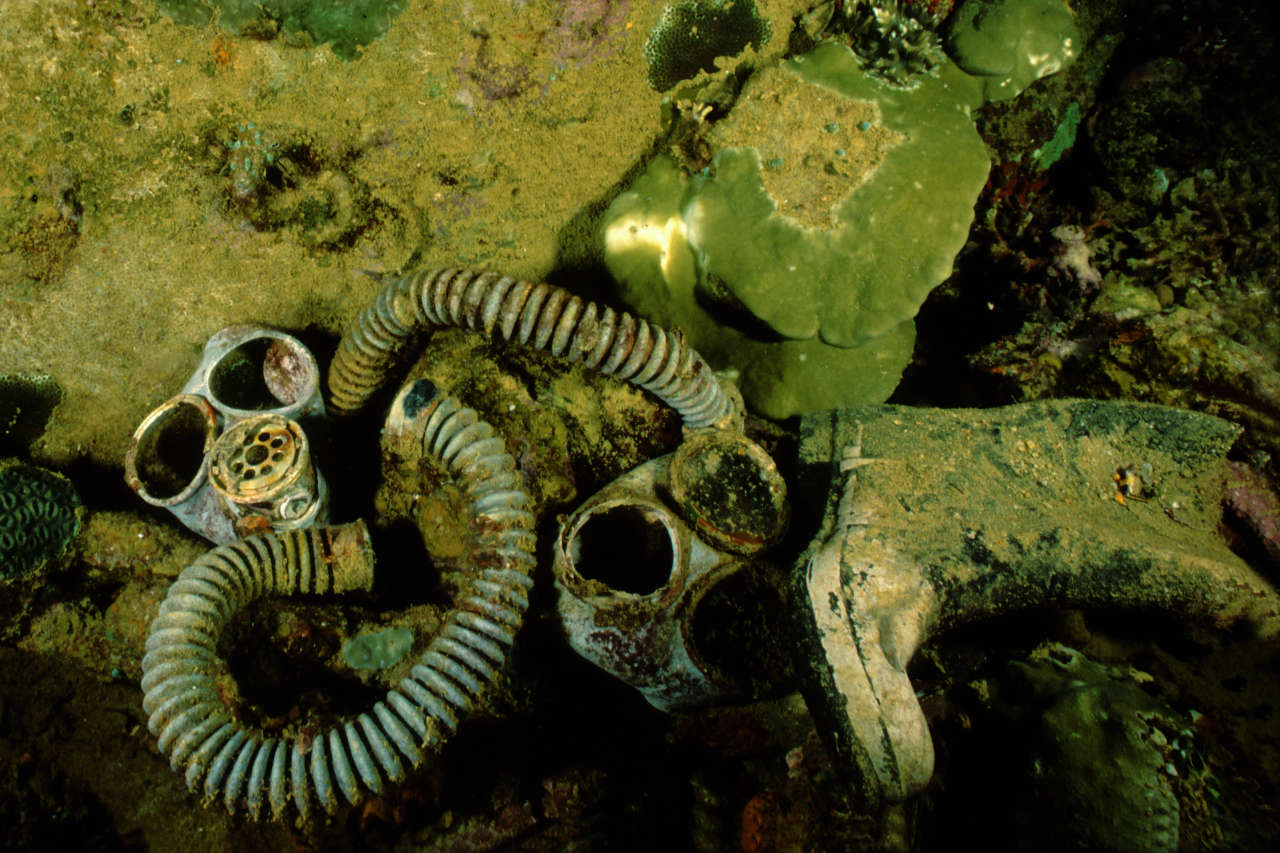
The History of Palau During WWII • Diving Palau's WWII Wrecks • Dive Palau - Wreck of the IRO • Dive Palau - Wreck of the AMATSU MARU • Dive Palau- Wreck of the CHUYO MARU • Dive Palau- Wreck of the BUOY #6 • Dive Palau - Wreck of the TESHIO MARU • Synopsis of Diving Palau’s 5 Best Wrecks
The History of Palau During WWII
During World War II, Palau was a vital battleground between the United States and Japan. In a difficult and bloody fight in 1944, American soldiers conquered the islands of Peleliu and Angaur. The Japanese had built a (fortified) fortress of interconnected tunnels, bunkers, and hardened gun positions using the huge number of natural gaps in the coralline limestone formations, where more than 10,000 defenders could safely wait out the naval onslaught. The Americans were met with blistering fire from many undamaged gun emplacements as they made their way to the beaches. To secure the island, it would take more than 66 days and the equivalent of an entire Marine division. At exorbitant cost, key defensive positions had to be taken one by one.
The war's closing months were bleak. United States aircraft scoured the skies for targets to bomb and strafe. When the Japanese soldiers' enormous garrison ran out of food, they got desperate. Informants recall the dread of aerial strikes and Japanese forces stealing already scarce food supplies. Prior to the surrender and repatriation of Japanese forces, starvation and disease took their toll. Fewer than 5,000 Palauans remained alive after the end of the Pacific War, with many Palauan families adopting Japanese children into their midst (those refused passage back to Japan, as they were too young to make the dangerous journey). Following the war's end, all remaining Japanese were repatriated. In Palau, over 100 American servicemen are still recorded as missing in action.
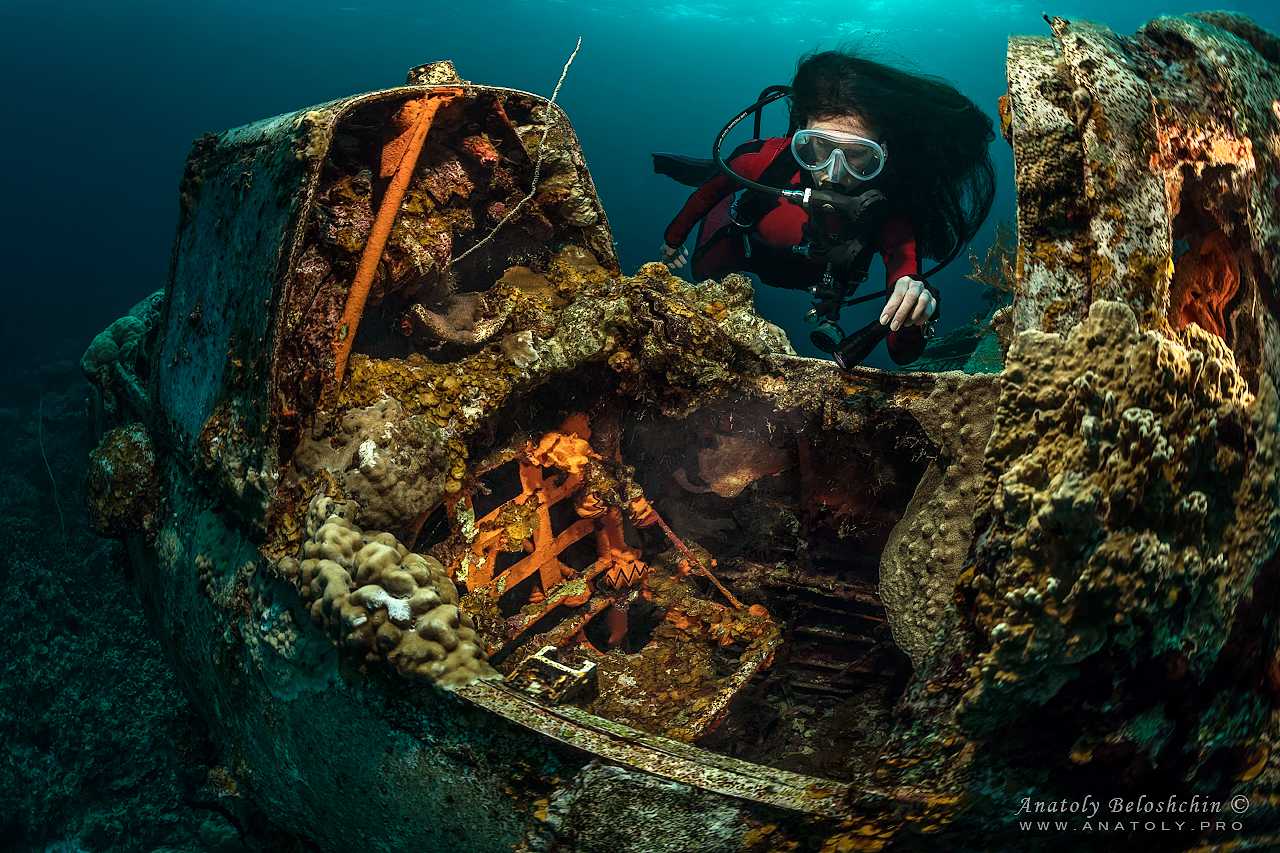
Diving Palau's WWII Wrecks
While the Japanese government was able to salvage some of the wrecks after the war, the archipelago now has many fascinating wrecks. We recommend liveaboard diving in Palau to see the amazingly diverse WWII wrecks, which include everything from sunken Japanese Zero planes to massive cargo ships covered in hard and soft corals. These underwater museums exhibit a plethora of items, ranging from gun platforms to spent bullets, and offer a chilling glimpse into the past. Divers will find an abundance of marine life among the wrecks, giving them the best of both worlds, whether it's schools of jacks and snapper or elusive leopard sharks.
Because of the vast number of wrecks, there is something for every diver's skill level. The majority of the wrecks are in shallower depths, making them perfect for Open Water divers; nevertheless, due to their depth and currents, certain wrecks are better suited to advanced divers.
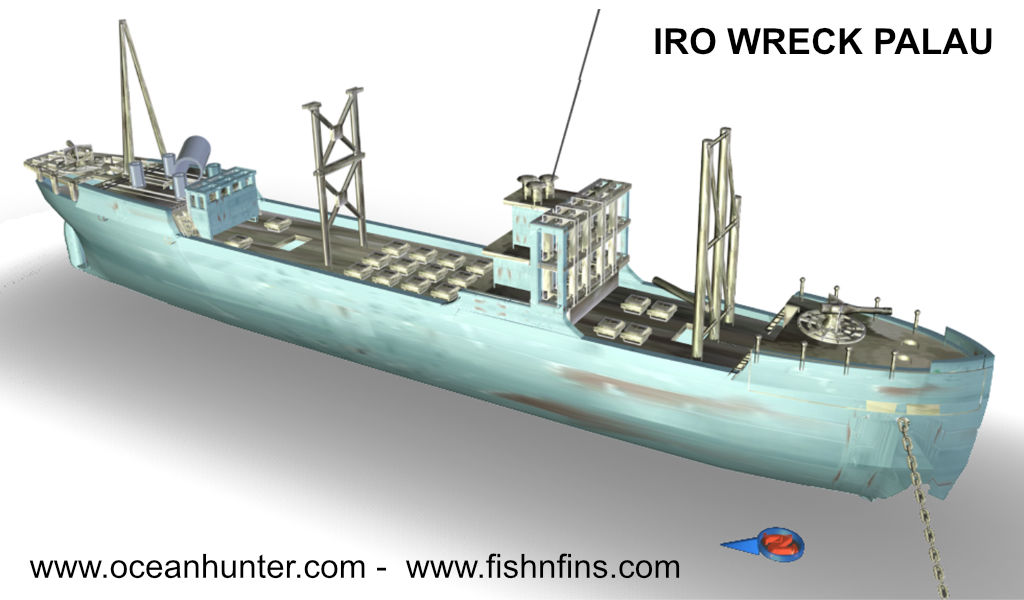
Dive Palau - The Wreck of the IRO
The Iro and her sister ship, the Sata, sank during Operation DESECRATE ONE within 300 yards from each other in the Urukthapel anchorage. Ever since their discovery, numerous efforts have been made to identify which ship is which. Underwater it is easy to tell one ship from the other, one sits upright and the other has capsized. For the sake of continuity, we will follow Dan Bailey's identification and will refer to this wreck as the IRO (Klaus Lindemann, another wreck expert, identified her as the Sata). The Iro was a fleet oiler and supply ship. On March 22, 1944, on her way from Philippines to Palau, a torpedo launched from the submarine USS Tunny hit her bow forward of the bulkheads. On March 30, 1944 she came under fire and was bombed during Operation DESECRATE ONE. A massive explosion in the engine room sent her to the bottom. Diving the Iro is easy and enjoyable. Follow the mooring line to the forward tower and onto the huge and wide deck. The bow is pointing east. On top of the bow is a very large gun mounted on a circular platform. The gun barrel diameter is 7 inches (17.8 cm) and the length is 14 feet (4.26 meters). The gun is aiming down at a 20-degree angle and is completely encrusted with corals and marine life. If you are interested in the bow damage, follow the ship's starboard anchor chain down along the side of the ship. The port anchor is still in place. Starting at 80 feet (24.4 meters) the torpedo damage becomes visible; the hole is now covered with black coral growth. Swim up again to deck level, going aft, examine the deck, its fuel pipes, hoses hatches and portholes. The bridge is open and easily accessible due to fire damage as a result of the bombing. The crew quarters are under the bridge; do not attempt to go through unless you are fully prepared to penetrate the ship. Further down the deck you will reach the engine room; it is large and open. The boiler can be easily identified along with the catwalks and railings. As you near the stern another big loading tower can be seen. Past the loading tower is the aft gun. This gun is identical to the bow gun. To thoroughly explore this interesting wreck, more than one dive is needed!
Fascinating Facts about The Wreck of the IRO
The term MARU, usually added as a suffix to the name of a Japanese ship, is not added to the name of this ship. This is due to the military origin of the Iro. The term Maru is used to identify civilian ships. The Japanese converted many of their civilian ships for military use during WWII
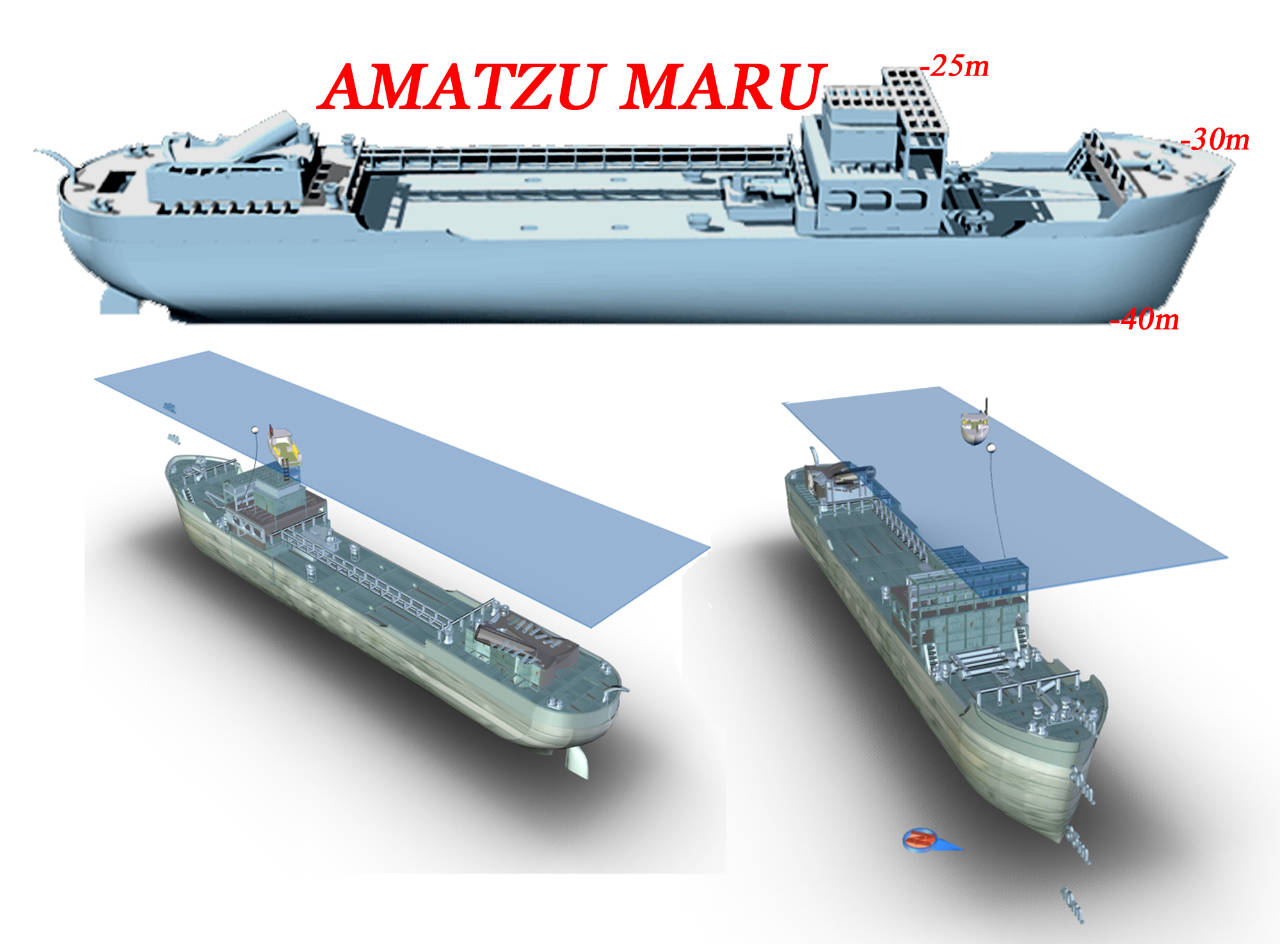
Dive Palau - The Wreck of the AMATZU MARU
Nicknamed Black Coral Wreck for numerous bushes of Black Coral that adorn the ships guardrails and the superstructure. The Amatzu Maruis the largest shipwreck in Micronesia and the deepest Japanese wreck in Palau. This oil tanker sank, like all other WWII Japanese wrecks in Palau, during the air raid Operation DESECRATE ONE on March 30-31, 1944. She was partially salvaged after the war. The bow is raised above the main deck with ladders on both sides connecting it to the deck. The anchor winch and anchors were removed during the unsuccessful salvage operation in the early 1950 s. Part of the anchor chain can still be found scattered on the foredeck. From the bow, moving aft, toward the bridge, pipes, hoses and large valves used for loading and unloading the oils and fuels are visible. The bridge is constructed of 3 decks, the uppermost is the navigational deck, some instruments can still be found.
The bridge can be entered from above between the support beams. The wooden walls and floor structures were destroyed by fire or have deteriorated over time. The main fuel storage area behind the bridge features a large piping system now covered with extensive marine growth. Square holes were cut through the deck during the salvage attempt. The Amatzu Maru was hit directly by several 1000 lbs. bombs. US Navy archive aerial photos (were) taken during the attack clearly show heavy smoke rising from the engine compartment. Diving through this section of the ship reveals huge piles of twisted metal, partly due to salvagers but mainly from a direct bomb hit.

At the stern, the twisted remains of a circular gun platform can be seen; the gun is missing. If the huge 4-bladed prop is of interest, begin your dive at the stern before visiting the rest of the ship. To really see this large and magnificent WWII wreck more than one dive is necessary. Salvage Operation After WWII: the Japanese were granted salvage rights in the Pacific. Through the late 40s and early 50s Japanese salvaging companies attempted to dismantle or raise many of the wrecks in Palau and Chuuk (Truk) Lagoon. The Amatsu Maru was a prime salvage target when the recovering world economy was craving for tankers. The salvage company originally sought to raise the ship, but later decided to dismantle the ship. During an attempt to cut through the plates, it is believed the flame of a torch hit trapped gases setting off an explosion that killed two men. The Japanese then abandoned the salvage attempt, believing the accident to be an omen of foreboding.
Fascinating Facts about The Wreck of the AMATZU MARU
Many sunk and beached ships were salvaged in Palau after the war. The salvagers loaded the scrapped metal on some of the re-floated ships in order to tow them back to Japan. On the return trip to Japan the entire salvage fleet was hit by a typhoon in the South China Sea and sunk! Not one ounce of scrapped metal ever made it back to Japan. The ocean claimed back what belonged to it.
Wreck diving week with Fish 'n Fins, The Pioneer Dive Shop in Palau - June 4 - 11, 2022 12th Annual Wreckpedition Palau
[/calltoaction] 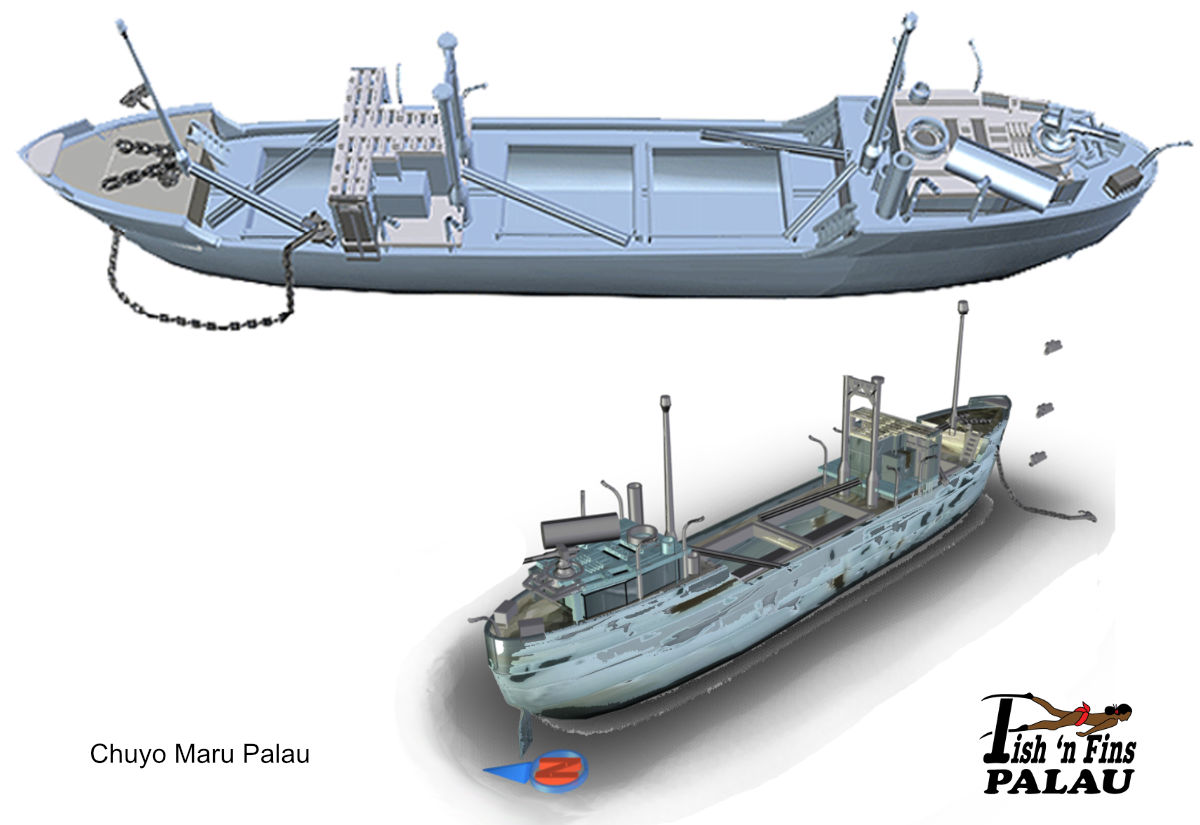
Dive Palau - The Wreck of the CHUYO MARU
This medium sized costal freighter was bombed during Operation DESCECRATE ONE on March 30-31; she sank on April 1,1944. The Chuyo Maru is one of the most popular wrecks in Palau. Nicknamed Lion Fish Wreck for the large number of lionfish that reside in and on this ship. The Chuyo Maru has no marker buoy. The dive guide will locate the wreck and use a lead weighted anchor to tie off the boat. Usually the dive begins at the bow section of the ship. The bow is raised above main deck with a tall loading tower in the middle. On top of the forecastle is a large double-headed anchor winch and coils of cable now encrusted with colorful corals. On the port side of the deck just prior to reaching the bridge are two (2) anchors.
In the early 1990s a fishing boat unknowingly anchored above the Chuyo Maru, while lifting their anchor they snagged the Chuyo anchor. The chain from the fishing boat broke trying to lift both anchors. Both anchors can now be seen lying together on the deck. Square trussed loading beams from the forward mast extend aft toward the forward hold. The hold is empty. Swim aft toward the bridge. The bridge structures were burned during the bombing and have since disintegrated; remains of the brass compass and ship’s telegraph can still be seen. Swimming past the bridge, you will approach the main cargo holds. These holds are empty too, save your air and bottom time for further exploration. The engine room and boiler room is raised above the main boat deck. Preparation is needed in order to penetrate the engine room and the crew quarters. A single door on the starboard side leads to a catwalk and stairs that connect the deck to the engine room entrance. The engine room is relatively large but can turn into rusty -brown silt filled water very fast. Further aft, toward the stern past the engine room skylights are the stern gun, four (4) ammunition boxes and two (2) depth charge launchers both containing a depth charge. The stern gun is a standard 1.86 tons gun with short barrel with a maximum range of 17,388 feet (5300 meters). This type of gun was usually mounted on ships under 5000 tons.
Fascinating Facts about The Wreck of the CHUYO MARU
Although the exact location of this wreck was recorded, the wreck was not considered worth salvaging after the war. She was forgotten until April of 1989 when wreck hunters Francis Toribiong and Klaus Lindemann rediscovered her.
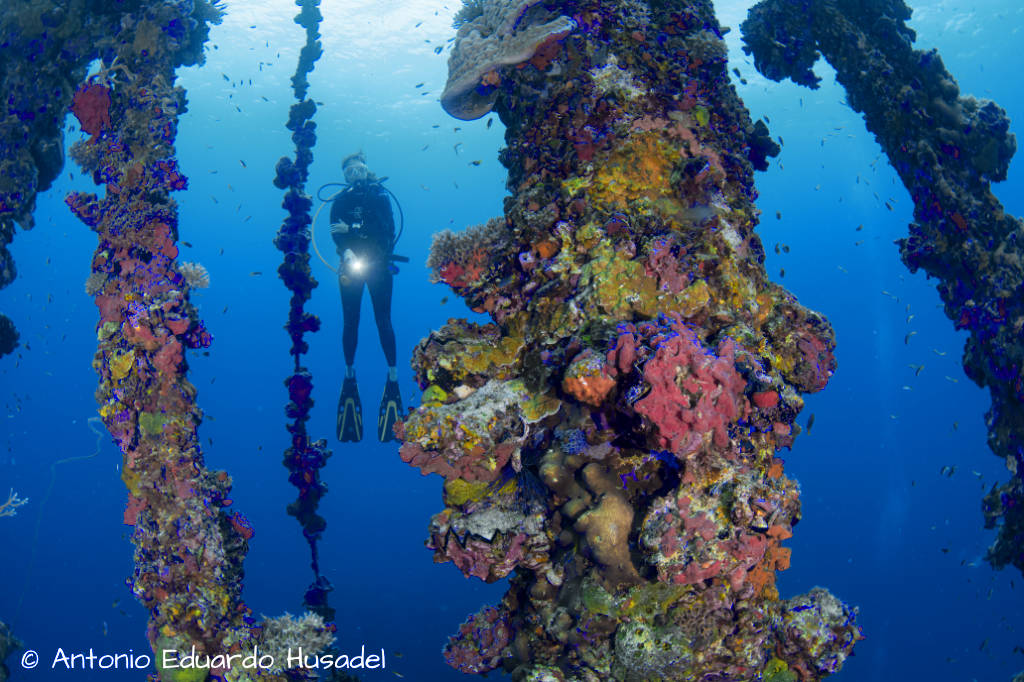
Dive Palau - Wreck of the BUOY #6
This 100 foot (33 m) long vessel known as Buoy #6 wreck (original name is unknown) is an old World War II Sub chaser. From 1941 onward some 200 auxiliary submarine chasers of this class were built. Diving on this wreck should only be attempted during slack tide, as the currents in the channel can be very swift. Your dive boat will be anchored close to channel marker #6 at 10 feet (3 m) of water. Swimming down the slope you will see the stern of the wreck with its corroded rudder. The wreck is overgrown with hard and soft corals and is home to many tropical fish. Usually the dive will start shortly before slack tide, if the current is still running find shelter on the leeward side of the wreck. The wreck was partially salvaged after the war and is deteriorating fast, some of the hull’s plates have fallen. Built with the engine amidships two sections of superstructure can be seen. A circular gun platform is mounted on the bow but the gun is missing. When you leave the wreck on your way up, it is important to swim back to the stern section and from there to the southwest slope (you can see the slope from the stern). Malakal Channel is a busy waterway and you should not ascend in the middle of the channel.
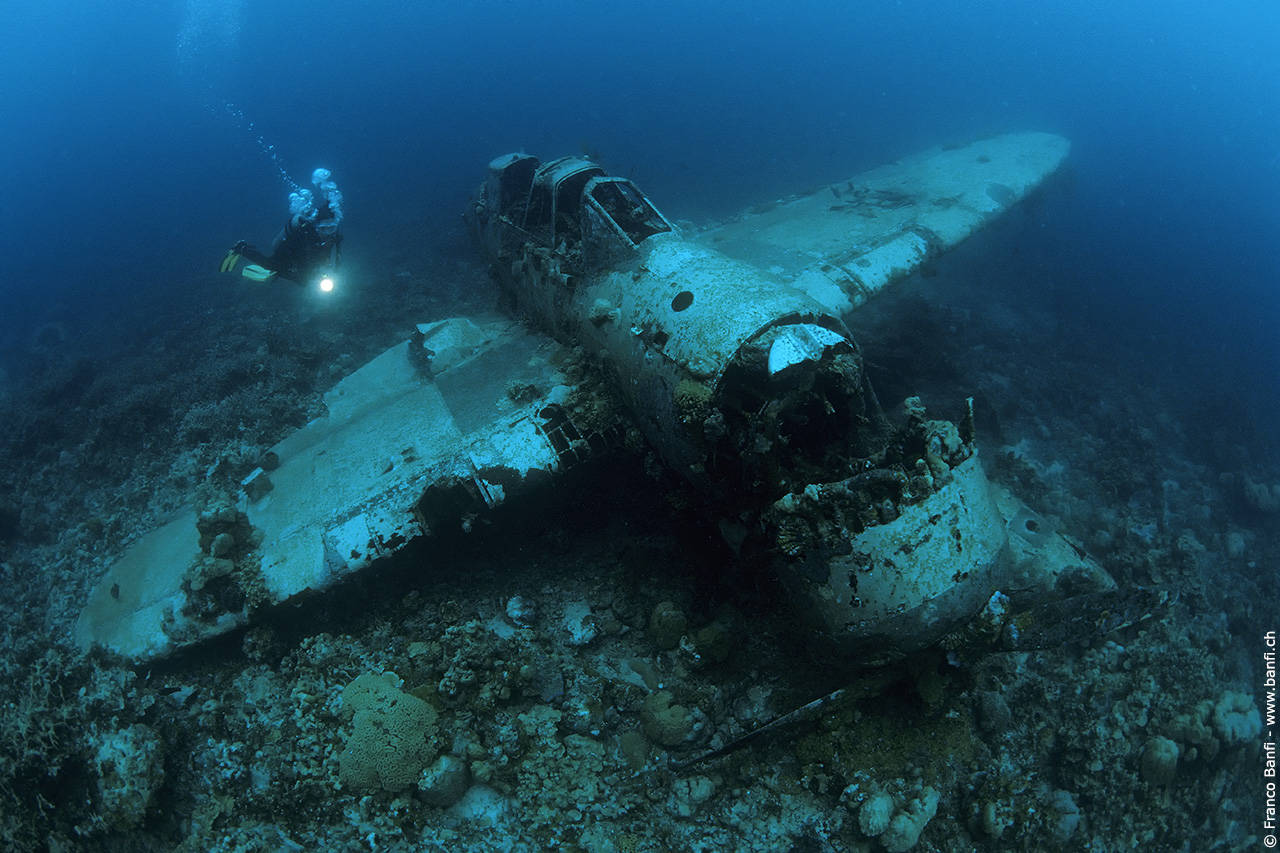
Dive Palau - Wreck of the TESHIO MARU
The Teshio Maru along with several other ships tried to escape Palau waters ahead of Operation DESECRATE ONE on March 30, 1944 when she was disabled. She was headed north to the Toachel Mlengui Passage when she was strafed and bombed. Although not directly hit, she was crippled when the stern was staved in and the prop shaft bent by a bomb exploding along side the ship. The ship drifted along the main channel until it was beached on the reef. After being beached for a number of years, the Teshio Maru slipped off the reef and sank parallel to the underwater coral slope, coming to rest on her starboard side. After the war, while the ship was still on the reef, she was salvaged.
Fascinating Facts about The Wreck of the Teshio Maru
According to author and WWII wreck expert, Dan Bailey, the Teshio Maru had been bombed and strafed while on a re-supply run to Wewak, New Hollandia. This occurred just weeks before she was fatally crippled in Palau tying to out run U.S. Navy pilots during Operation DESECRATE ONE. IMPORTANT: On this ship, as with all ship and plane wrecks in Palau waters, live ammunition can be found. A work of caution: DO NOT PICK UP ANY AMMUNITION!!!! Due to the age of the bullets, bombs, mortars, etc., these pieces of history are very unstable and can explode.
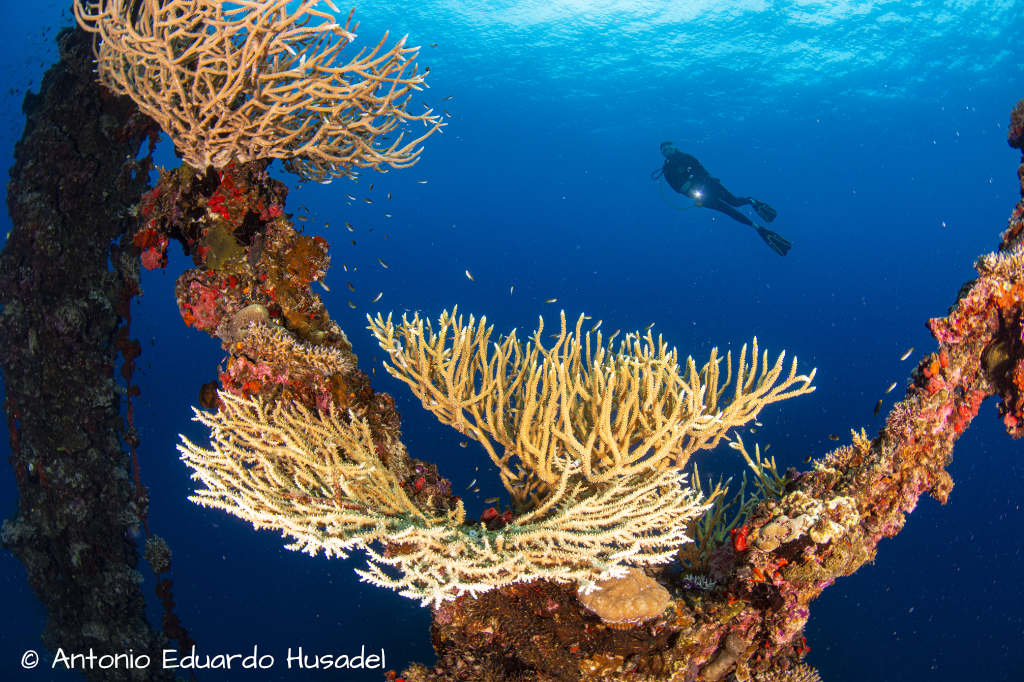
Conclusion
In order not to go beyond the scope of our article, we had to be content with the description of just the 5 best wrecks in Palau. There are still 25+ wrecks on the seabed in Palau waiting to be explored. The absolute best way to get to know most of these wrecks and learn about their history is to book the next WREXPEDITION. During the three daily dives we will explore, as already mentioned, 14 WWII wrecks and during the evenings with good food, drinks and lectures we will tell you more about each wreck and its history to prepare you for the next wreck diving day.

